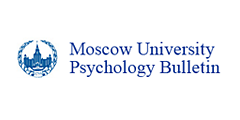Most read articles
-
Intimate Partner Violence: An Overview of the Existing Theories, Conceptual Frameworks, and Definitions
-
Assimilation or integration: Similarities and differences between acculturation attitudes of migrants from Central Asia and Russians in Central Russia
-
Technologies of Virtual Reality in the Context of WorldWide and Russian Psychology: Methodology, Comparison with Traditional Methods, Achievements and PerspectievesPDF HTML32107“ CITE
Zinchenko, Yu.P., Menshikova, G.Ya., Bayakovsky, Yu.M., Chernorizov, A.M., Voiskounsky, A.E. (2010). Technologies of Virtual Reality in the Context of WorldWide and Russian Psychology: Methodology, Comparison with Traditional Methods, Achievements and Perspectives. Psychology in Russia: State of the Art, 3, 12-45.
copied
-
Comparative analysis of Canadian multiculturalism policy and the multiculturalism policies of other countries
-
Creativity in online gaming: Individual and dyadic performance in Minecraft
-
The Methodology of Syndrome Analysis within the Paradigm of "Qualitative Research in Clinical Psychology"
-
Affective-cognitive Differentiation and Integrity as a Dispositional Factor in Personality and Behavioral Disorders









